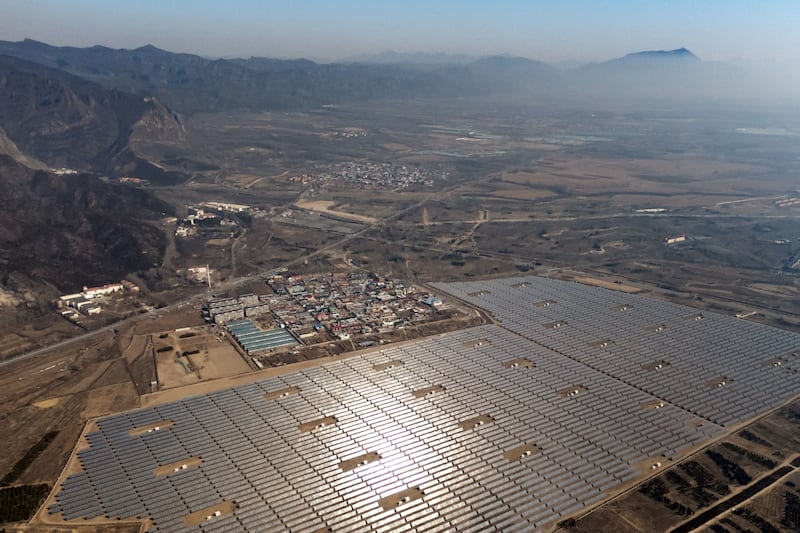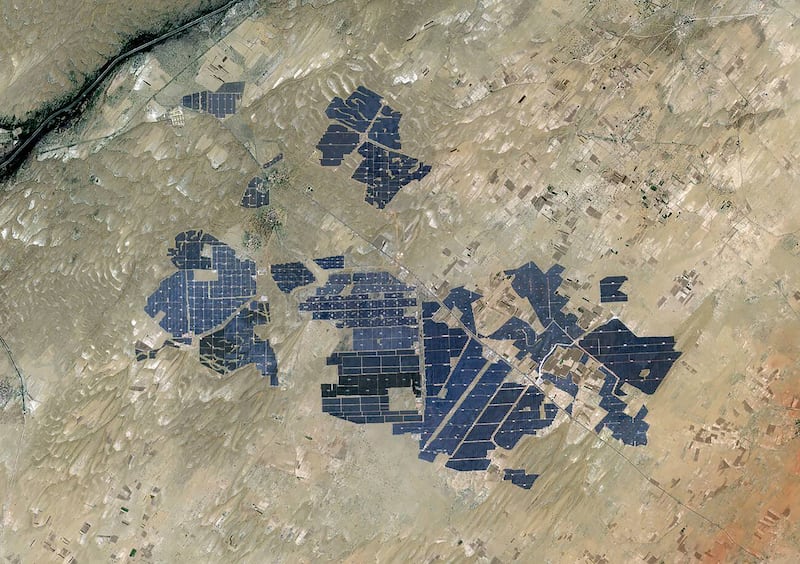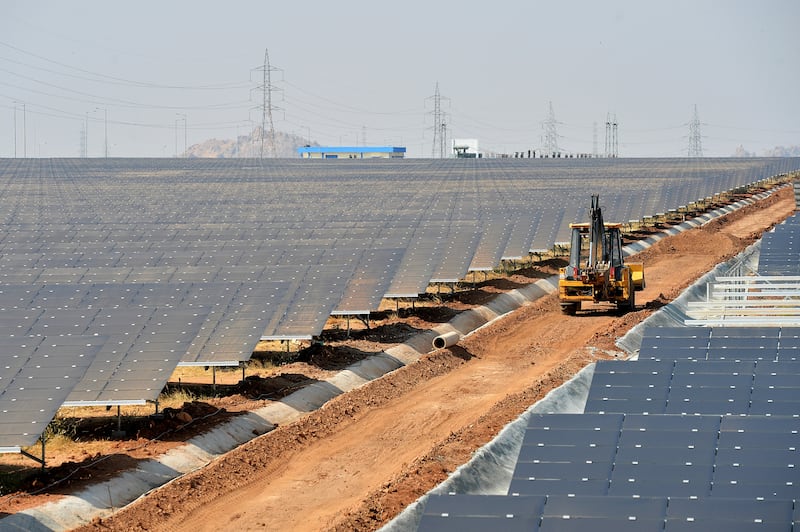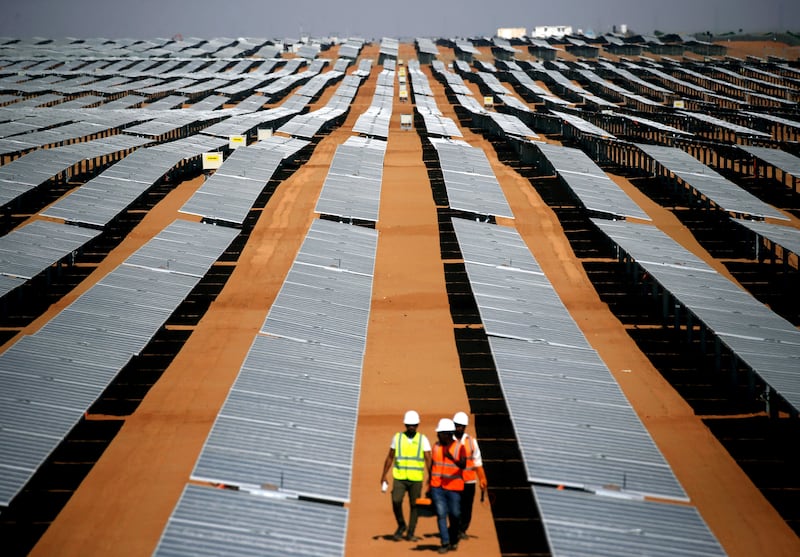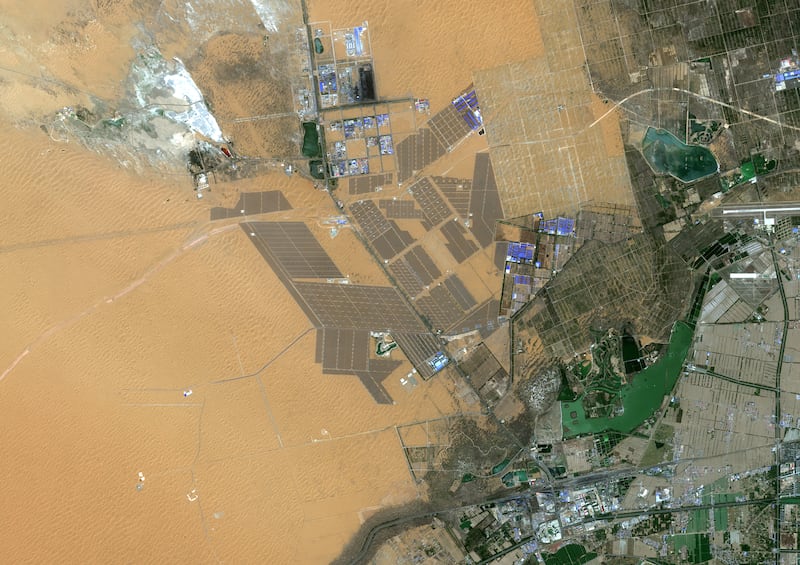Global renewable energy deployment set a record in 2023 as transition efforts continued, but it fell short of levels required to triple capacity by 2030, according to the International Renewable Energy Agency (Irena).
Renewable energy capacity in the power sector grew by 473 gigawatts from 2022 to 3,870 gigawatts last year, the Abu Dhabi-based agency said in a report on Wednesday.
Although renewables accounted for 86 per cent of total capacity additions in the energy sector globally, compared to 84 per cent in 2022, the growth was unevenly distributed across the world, the agency said.
“This extraordinary surge in renewable generation capacity shows that renewables are the only technology available to rapidly scale up the energy transition aligned with the goals of the Paris Agreement,” said Francesco La Camera, Irena’s director-general.
“Nevertheless, the data also serves as a telltale sign that progress is not moving fast enough to add the required 7.2 terawatts of renewable power within the next seven years,” Mr La Camera added.
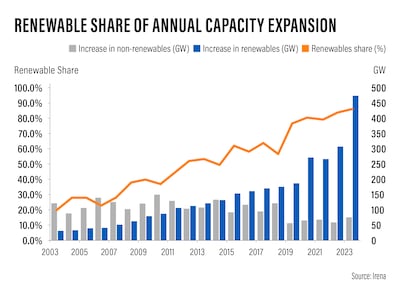
The Middle East last year recorded its highest renewable capacity expansion on record, up 16.6 per cent annually, with 5.1 gigawatts of new capacity commissioned last year.
Total capacity is currently at 36 gigawatts, with the region accounting for 0.9 per cent global share.
Overall, Asia accounted for the biggest expansion of renewable energy capacity last year, making up about 69 per cent of the total increase.
The region grew its renewable capacity by 327.8 gigawatts to reach 1,961 gigawatts, accounting for 50.7 per cent of the global total.
China, the world’s second-largest economy, played a significant role in this expansion, with its capacity increasing by 63 per cent to reach about 298 gigawatts.
The rising competitiveness of solar and wind energy compared with coal and natural gas has driven renewable power development in the country, Irena said.
Capacity in Europe and North America expanded by 71.2 gigawatts (up 10 per cent) and 34.9 gigawatts (up 7 per cent), respectively.
Renewable energy capacity growth in the EU was supported by policy focus and energy security concerns, alongside the improving cost-competitiveness of renewables versus fossil fuels, Irena said.
As a group, the G7 countries increased their capacity by 7.6 per cent, adding 69.4 gigawatts last year. Meanwhile, the G20 nations boosted their capacity by 15 per cent, reaching 3,084 gigawatts.
Oceania's installed capacity increased by 9.4 per cent, largely due to Australia, while South America reported expansion of 8.4 per cent annually.
Africa also recorded modest renewable energy capacity increase of 4.6 per cent, resulting in a total capacity of 62 gigawatts.
Financing renewable energy projects is considered challenging in Africa due to limited access to capital, high upfront costs and perceived investment risks.
Africa requires $2.8 trillion between 2020 and 2030 to implement its nationally determined contributions under the Paris Agreement, according to the Climate Policy Initiative.
“Policy interventions and a global course-correction are urgently needed to effectively overcome structural barriers and create local value in emerging market and developing economies,” Mr La Camera said.
“The patterns of concentration in both geography and technology threaten to intensify the decarbonisation divide and pose a significant risk to achieving the tripling target,” he added.
However, to achieve the global target of more than 11 terawatts for the tripling goal, the G20 members alone must reach 9.4 TW of renewable power capacity by 2030, the report said.
At the Cop28 climate conference in Dubai last year, more than 100 countries committed to triple renewable energy capacity worldwide by the end of the decade and double the annual rate of energy efficiency improvements.
However, China and India – two of Asia's largest economies – refrained from signing the pledge.
The countries also did not agree with initial drafts of the final agreement that included curbs on investments in coal-fired power plants.
The delegates ultimately settled on a milder agreement to “accelerate efforts towards the phase-down of unabated coal power”.
Although India and China – two of the most populous countries in the world – have set ambitious clean energy targets, they intend to rely on coal for the longer-term to meet growing power demand.
Coal accounts for around three-quarters of India's power generation and nearly 61 per cent of China's.
Renewable energy is set to make up more than one-third of total electricity generation by early 2025, overtaking coal, according to the International Energy Agency.
Global power demand will grow at a faster rate over the next three years as the energy transition gathers pace, with low-emission technologies expected to meet the additional increase in consumption, the Paris-based agency said in its Electricity 2024 report in January.
Earlier this year, the IEA said that the rate of expansion of global renewable energy capacity surged by 50 per cent in 2023, with solar accounting for three-quarters of the growth.
According to Irena, solar accounted for 73 per cent of the renewable growth last year, reaching 1,419 gigawatts, followed by wind power with a 24 per cent share.
